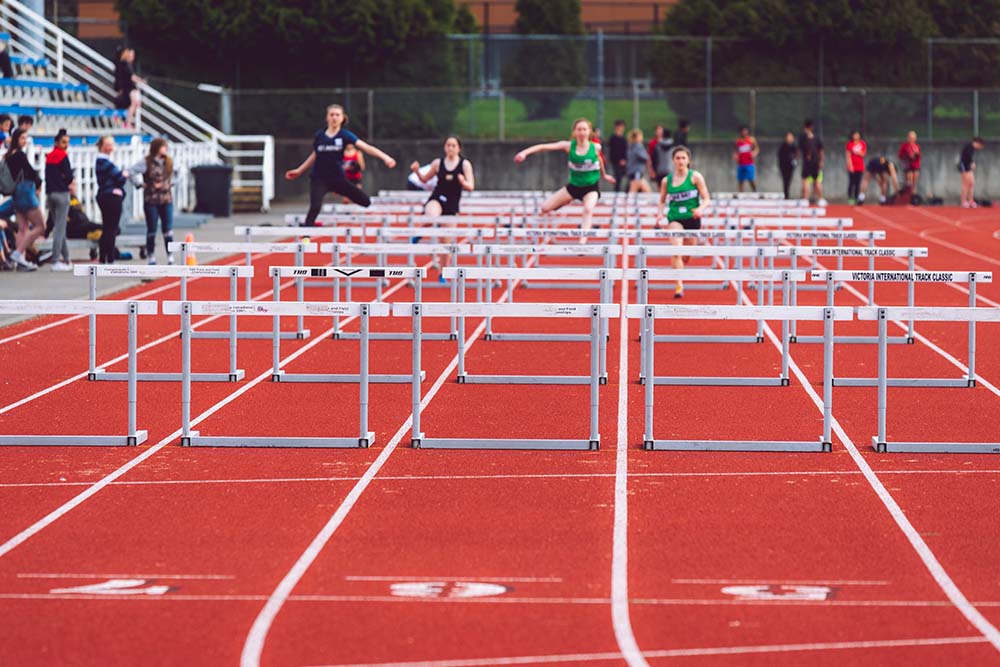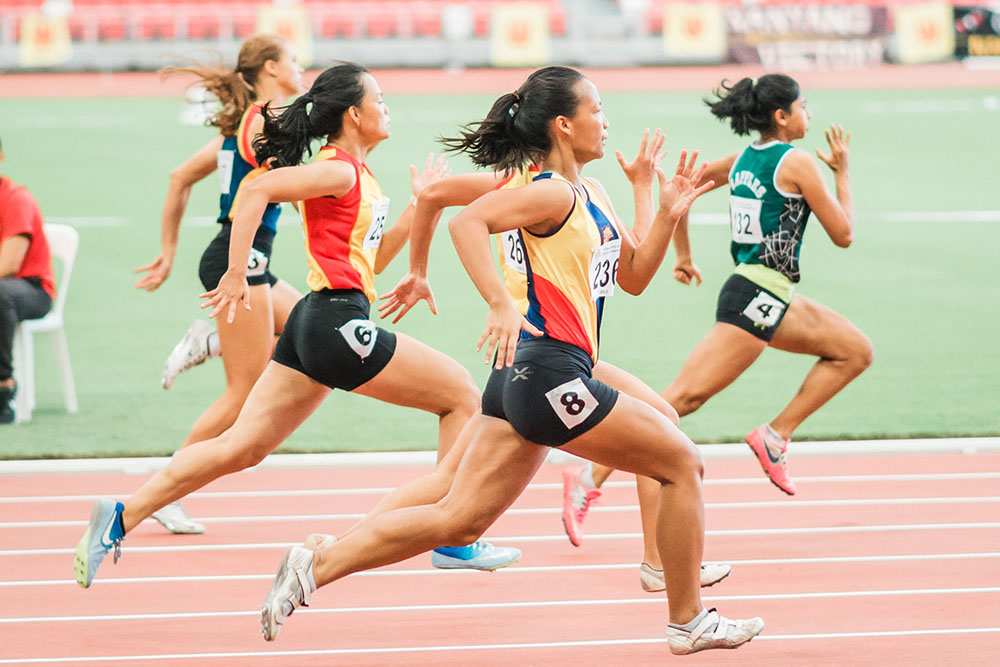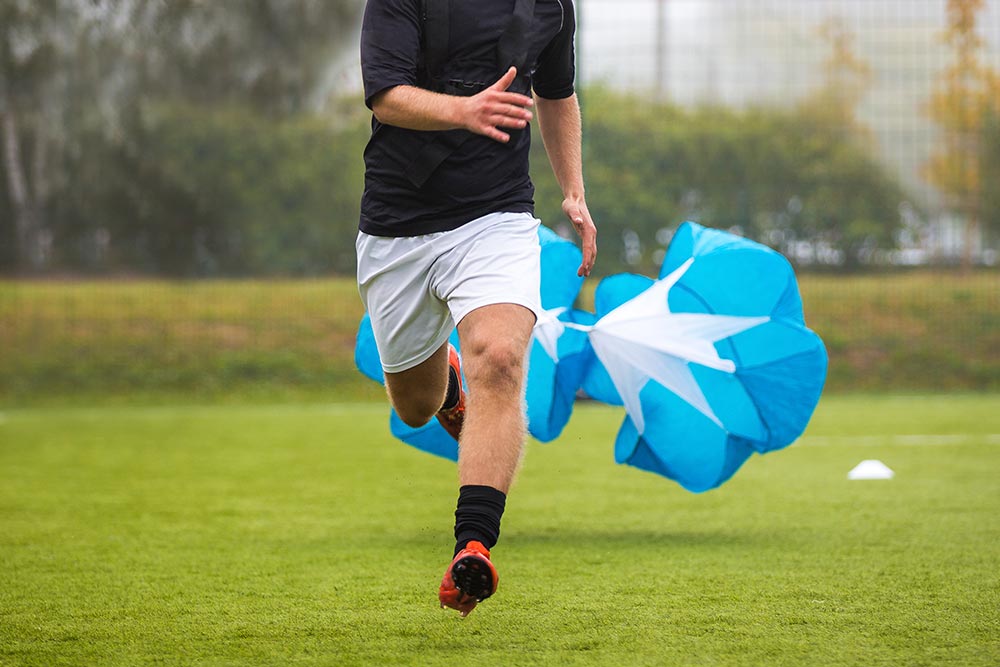Start Positions for Sprinters
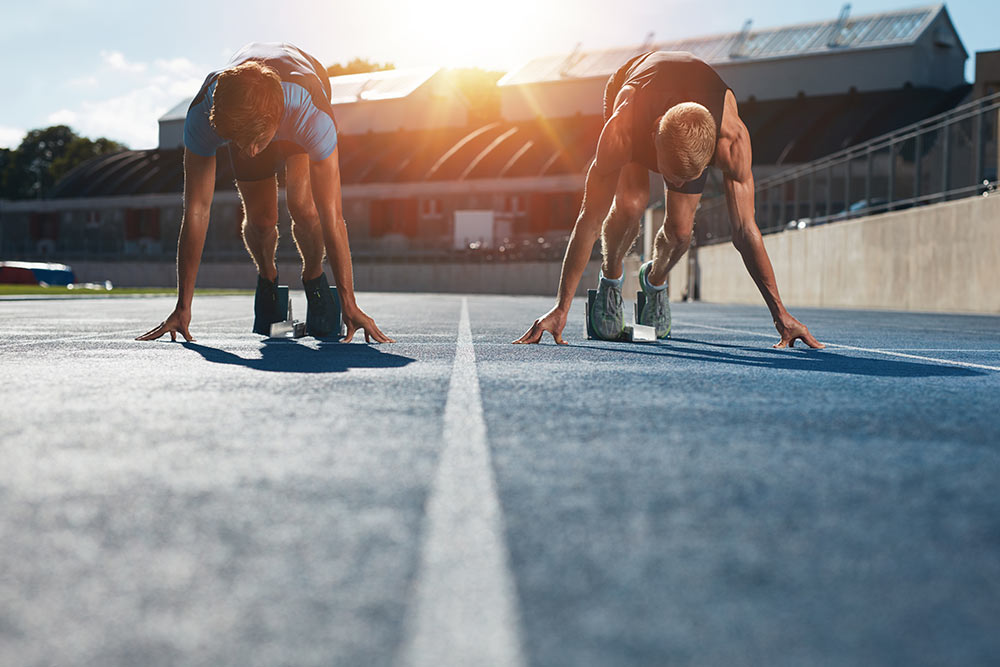
Hunter Bennett
Sprinting is one of the most incredible acts of human performance on the planet. While at first glance it may seem like quite a simple task (just run as fast as you can, right?), upon further analysis it quickly becomes apparent that it is so much more than that.
It requires every single muscle in the human body to fire at maximal capacity in an integrated and coordinated manner.
Hell, it is arguably the most physically demanding physical act in the world.
Now, when it comes to sprinting – or more importantly, improving sprint performance – most people look at the ways you can improve maximum sprinting speed.
But what many don’t realize is that the start position may play a more important role.
Sprint starting positions: start techniques
Before we get into the nitty-gritty around how you can optimize your sprint start to improve sprinting performance, it is important to touch on the four main types of sprint starts that exist.
Standing sprint start
A standing sprint start is very much what it sounds like – when you commence a sprint from a standing position. This position is more common among master level sprint athletes, and longer duration running races.
In this scenario, you start with your feet about shoulder width apart, and with your most powerful leg set in front of your body placed just before the starting line. In this position, most of your weight should be placed upon your front leg.
At the ‘set’ call, bend your hips slightly while keeping your head, chest, and spine in a neutral position.
Related Article: The Biomechanics of Sprinting
Four-point sprint start
The four-point start has you commence in a crouched position with both hands on the starting line, and your front knee leaning over the starting the line. Your back knee should be on the ground next to your front ankle.
On the ‘set’ call, extend both knees so your hips are sitting just higher than your shoulders. Lean forward and distribute the bulk of your body weight between your hands and front leg.
In this position, the front leg should be bent to approximately 90 degrees and the back leg to approximately 120 degrees
Three-point sprint start
The three-point start position is very similar to the four-point, except you only have one arm placed on the ground. This position is commonly used with field-based athletes performing the 40-yard dash for testing purposes.
In this setting, set up with your more powerful leg in front, and the same arm off the ground.
On the ‘set’ call, elevate your hips so they are sitting just higher than your shoulders. Most of your weight should be on your legs, with just the fingertips of your hand contacting the ground.
Block sprint start
Finally, we have a block start.
In this scenario, blocks are placed under your feet to avoid slipping during the initial phase of the sprint. Block starts are more commonly used by higher level athletes competing in a sprint of 400 meters or less.
The block start essentially replicates the four-point start, however, the hips should be elevated slightly higher on the ‘set’ call. In this position, the front leg should be bent to approximately 90 degrees, and the back leg to approximately 120 degrees.
What is the best sprint start technique?
There is a growing boy of research comparing crouching starts and standing starts to determine what offers the most benefits in terms of maximizing sprint speed – and the results have been interesting to say the least.
In trained sprinters, block starts seem to offer more merit as they increase the amount of horizontal force that the athlete can produce at take-off. This appears to translate quite nicely to faster 5 meters and 10 meter sprint times when compared to a normal crouching start or a standing start (Macadam, 2019).
However, it is important to note that this was in trained sprinters.
You see, managing a block start effectively is a skill unto itself. It requires timing and coordination that can only be developed with dedicated practice and training.
Comparatively, in individuals who do not use blocks within their regular training, crouch starts to seem to offer the most effective option (Slawinski, 2017).
What is the ideal body position to maximize sprint speed?
While I have already touched on this when describing each of the different sprint start setups, it is important to identify the ideal body position to maximize sprint takeoff speed.
No matter what stance you choose to take, you want to have your most powerful leg forward, and your hips bent.
This ensures that you maximize the recruitment of the muscles of your posterior chain (particularly the gluteal and hamstring muscle groups), while simultaneously allowing you to drive forward through your front leg with maximal intent (Marquardt, 2018; Edouard, 2018).
With both block and crouching starts, you want to make sure that in the set position, your front leg is bent to approximately 90 degrees, and the back leg to approximately 120 degrees.
This places you in the ideal position from which you can drive through your front foot, further enhancing acceleration (Čoh, 2017).
What are the Phases of sprinting?
Sprint performance can very broadly be broken down into three distinct phases (Maćkała, 2015):
- The start phase with acceleration: describing initial take off, and the period of acceleration until maximum sprint speed is achieved.
- Maximal speed: describes the period at which maximal sprint speed is maintained until muscular fatigue begins to result in speed reduction.
- Deceleration: describes the period from which maximal sprint speed begins to decline, until the completion of the race.
As I alluded to in the introduction, a lot of time and energy has been spent trying to improve maximal speed phase of sprinting, to cause a subsequent increase in performance – although, upon reflection, our time and effort may be better spent elsewhere.
You see, elite level sprinters have been shown to accelerate faster out of the blocks than their less elite counterparts. This means that they achieve their maximal sprint speed earlier, which in turn allows them to maintain their maximal speed phase for longer.
As you can imagine, this translates very nicely to improved sprint times.
However, if your acceleration is poor, then you waste an abundance of time and energy getting up to your maximal sprint speed. This means less time spent in the maximal speed phase and a slower total sprint time.
There is a reason that the sprint start is so damn important – because it literally sets you up for success (or failure).
How can I improve my sprint starts?
So, you might be wondering how to improve sprint starts? And in my mind, it comes down to three distinct factors:
- Breathing
- Sprint start technique
- Acceleration exercises
If you can work on each of these, then you can develop a more effective sprint start, and therefore a much faster sprint time.
Breathing to improve sprint starts
While there is limited research in the area, it would be unrealistic to think that the way in which you breathe does not have any impact on your physical performance. With this in mind, you want to optimize your breathing patterns during your sprint start to improve muscular contraction and take off speed.
This can be done by timing your exhalation with the take-off.
While in the set position, take a deep breath in and hold your breath.
On ‘go’, exhale as hard as you can while you simultaneously drive your front foot into the ground. This exhalation increases abdominal contraction, which forces more effective contraction of the lower limbs.
And the result? A faster take off speed.
Related Article: Boost Your Metabolism with Sprint Intervals
Exercises to improve sprint starts
During a sprint start, you need the coordinated contraction of both your upper and lower body to produce a fluid and powerful sprinting motion (Borysiuk, 2018).
As a result, your best bet is to use technique-based exercises such as skips, arm swings, and wall marches to work on developing the optimal body position for a fast and explosive sprint start.
Exercises to improve sprint acceleration
Improving acceleration really comes down to two distinct factors (Mackala, 2015):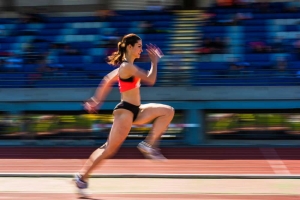
- Increasing the amount of force that you can put into the ground each step.
- Improving the speed at which you can apply the force of each step.
This means that to improve acceleration, your best option is a combination of strength and power training methods. These collectively improve the amount of force you can produce, while also enhancing the speed at which you can produce that force (Wisloff, 2004).
In an ideal setting, you want to make sure you accomplish this by using exercises that replicate the demands of sprinting, while also placing a premium on the posterior chain. My go-to exercises are box jumps, power cleans, front squats, split squats, and hip thrusts.
We have actually written a very detailed article on how you can use gym-based exercises to improve acceleration, which can be found here – so I strongly recommend that you check it out.
Take Home Message
A good sprint start is integral to successful sprint performance. It ensures a more efficient acceleration phase, which means you achieve maximal sprint speed faster, and then spend more time in the maximal speed phase.
The result? Seriously improved sprint times.
With this in mind, taking the time to work on your sprint starts and your acceleration out of the blocks is a must – so take the first step and use the tips outlined in this article to become a seriously explosive sprinter.
You can thank me later.
References
Macadam, Paul, et al. “Kinematic and kinetic differences in block and split-stance standing starts during 30 m sprint-running.” European journal of sport science (2019): 1-8.
Slawinski, Jean, et al. “Mechanics of standing and crouching sprint starts.” Journal of sports sciences 35.9 (2017): 858-865.
Marquardt, Amy, et al. “Effects of Starting Stance on Base Running Sprint Speed in Softball Players.” International Journal of Exercise Science 11.6 (2018): 179.
Edouard, Pascal, et al. “Sprint acceleration mechanics in fatigue conditions: Compensatory role of gluteal muscles in horizontal force production and potential protection of hamstring muscles.” Frontiers in Physiology 9 (2018): 1706.
Čoh, Milan, et al. “Biomechanical differences in the sprint start between faster and slower high-level sprinters.” Journal of human kinetics 56.1 (2017): 29-38.
Maćkała, Krzysztof, Marek Fostiak, and Kacper Kowalski. “Selected determinants of acceleration in the 100m sprint.” Journal of human kinetics 45.1 (2015): 135-148.
Borysiuk, Zbigniew, et al. “Coordination aspects of an effective sprint start.” Frontiers in physiology 9 (2018): 1138.
Wisløff, U., et al. “Strong correlation of maximal squat strength with sprint performance and vertical jump height in elite soccer players.”. British journal of sports medicine 38.3 (2004): 285-288.
You Might Like:

